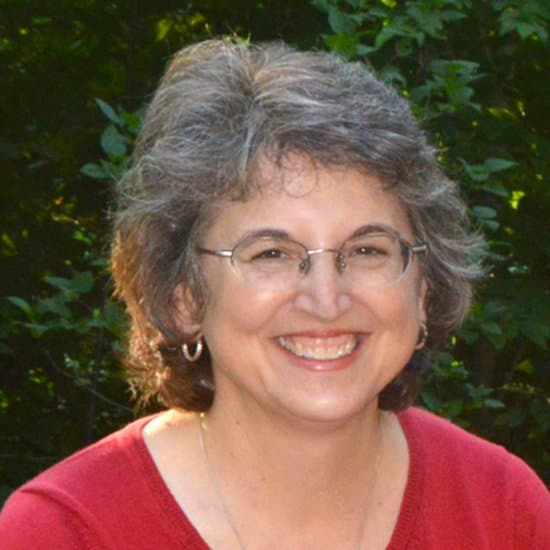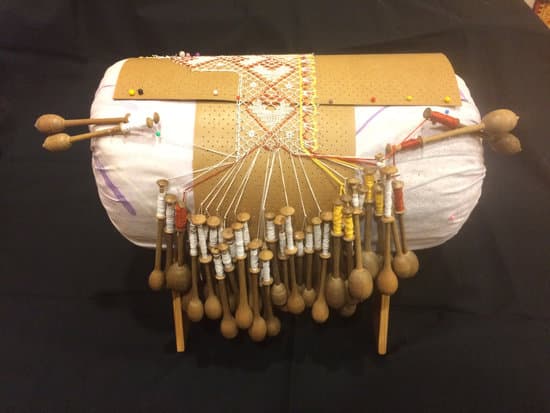
Spania Dolina—Beginning and Continuing
This Spania Dolina class is newly re-designed as a
progressive skill builder. The class starts with a basic
Spania Dolina ground (similar to Torchon), and we keep adding
new stitches and elements at the student’s own pace (all
skill levels including complete beginners).
Spania
Dolina is a Slovakian folk lace that is worked similarly to
Torchon with a wonderful splash of color. Students can stop
at any of the progress levels and use their skills to make an
edging, scarf embellishment, t-shirt embellishment, or a tea
light candle holder.
Dagmar Beckel-Machyckova
Dagmar started making lace as a 9-year-old girl in
Czechoslovakia, drawing on a long tradition of lacemaking.
After graduating from the Institute of Art Manufacturing in
Prague, where she studied both contemporary and traditional
Central European bobbin lace, she moved to the United States.
Dagmar’s love of lace, combined with her education at
one of the most prestigious lacemaking schools in Europe and
honed by 10 years of experience as a teacher at both regional
and IOLI conventions, make her classes fun and easy to
understand. Each class includes not only lace techniques, but
also explanations of the cultural dimensions and
circumstances of each lace.
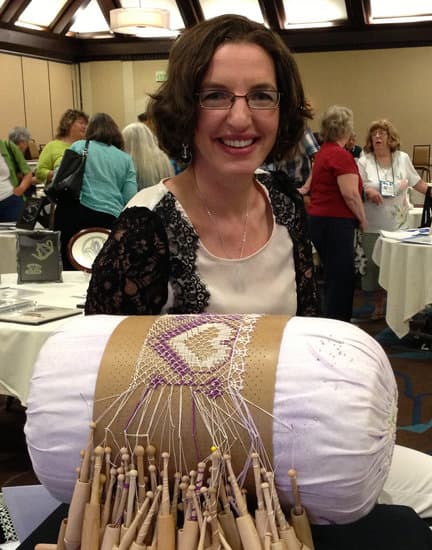
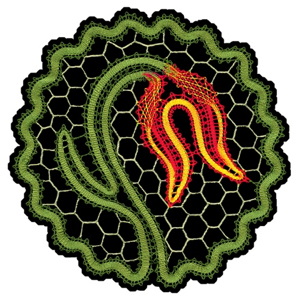
Milanese and Hungarian Tape Lace—All Levels
This class will offer students the option to learn about
Milanese or Hungarian Tape Lace. Both of these types of lace
include unique characteristics, while also sharing features in
common. We will be able to explore their similarities and
differences.
Milanese is a free-flowing tape-based
lace characterized by special decorative Braid stitches that
become integral features of each design. Adding color and
metallic threads allows lacemakers to make their own distinct
pieces from the selected patterns.
Hungarian Tape
designs are also formed with a graceful and elegant blend of
stitches. Elaborate pieces can be made with relatively few
pairs of bobbins. Plaited Fillings are often used to decorate
open spaces surrounded by the tapes.
The creative
nature of both of these types of lace make them suitable for
traditional and contemporary interpretation.
Projects will be offered to suit a variety of skill levels. A
solid foundation in basic Bobbin Lace skills is required.
Ability to read diagrams is also recommended.
Louise Colgan
Louise is a lacemaker, designer, and teacher with experience
in a broad range of Bobbin Lace techniques. She began making
lace in 1985 and has been teaching for 30 years. She has
served on the Board of the International Organization of Lace,
Inc. as President, 1st & 2nd Vice-Presidents, Southwest
Regional Director, and Grants Committee Chair. She is
currently Chair of the Proficiency Program Committee.
Louise has taught Bobbin Lace classes at many I.O.L.I.
Conventions, plus workshops for U.S. members of O.I.D.F.A. and
a wide variety of regional guilds. In 2012, she was invited to
teach workshops at the Australian Lace Guild’s National
Conference in Sydney and for the Tasmanian State Branch.
In her capacity as a lacemaker and designer, Louise has
exhibited her work both locally and internationally. She was
also a participant in the renowned International Poppy
Project. Her designs have been included in the Lace Express
magazine and the I.O.L.I. Bulletin. Additionally, she has
published three books of original patterns and has made an
instructional video on Milanese Lace through Hensel
Productions.
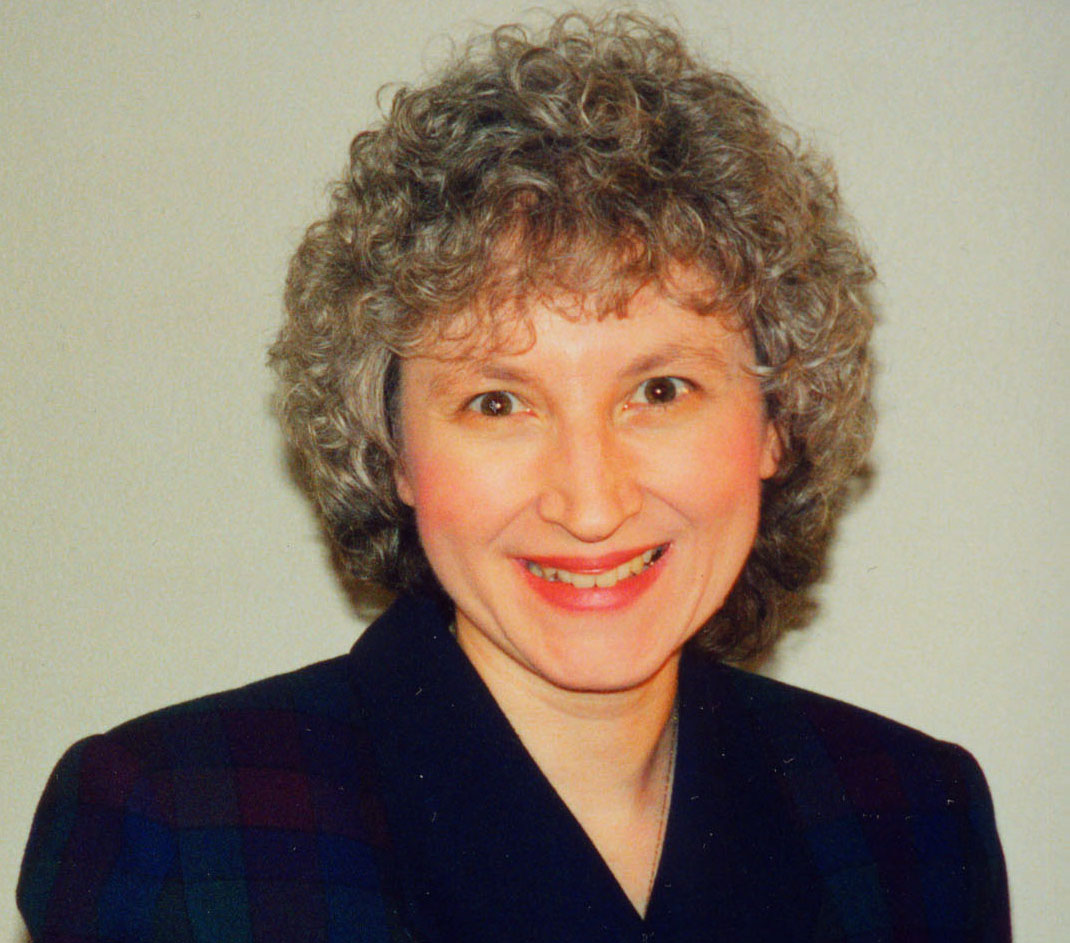
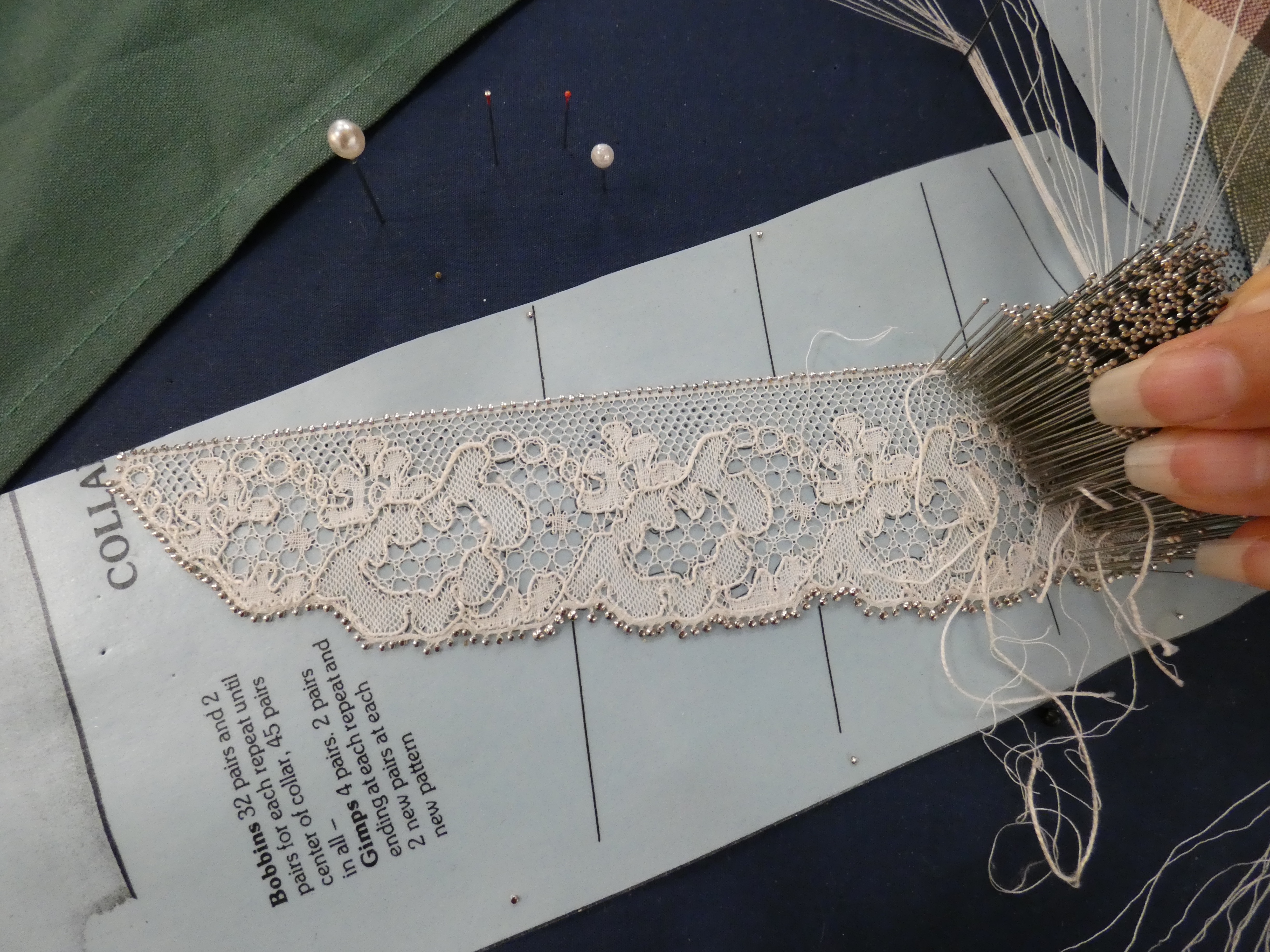
Bucks Point - Old Becomes New, Withof and More—All Levels
Bucks Point is a beautiful, elegant English bobbin lace with
net ground and prominent gimp to draw the eye to the design
motifs. This year students will have the opportunity to work
patterns that have been reconstructed from Susie’s personal
collection of old lace. These lovely old pieces have some
fascinating quirks not normally seen in the patterns in the
commonly used Bucks books. While these patterns are best suited
to those with previous Bucks experience, beginners to Bucks
will be welcome and will begin with more traditional patterns.
The flow and rhythm of Bucks patterns make it a pleasant lace
to work!
Anyone who wishes to either begin or
continue Withof is welcome to join this class. For those whose
interests lie elsewhere, other possibilities include Torchon
bookmarks or Christmas ornaments, Ulrike’s gold stars, ‘s
Gravenmoerse, and Brussels Duchesse. In addition, upon request
and with approval, students are welcome to pursue other laces,
which includes help with UFOs and long-awaited projects
requiring help to start.
Susie Johnson
Susie has been a lacemaker since 1981, Susie studied Withof for
many years with Jeannet van Oord, both in the US and the
Netherlands, mastering the new techniques as the lace evolved.
Her work and understanding of the lace has earned her a Withof
teacher's certificate from Sr. Judith, with whom she studied in
the Netherlands. Her Withof has been on exhibition in several
countries and has won numerous awards in competitions.
Susie co-edited Withof Duchesse in North America and did all of
the technical drawings and instructions for the book. For the
last 30 years she has been teaching many different laces at
events such as the IOLI convention, the Finger Lakes Lace Days,
the Winter Lace Conference, and Lace at Sweet Briar as well as
twice weekly classes at home. Her work has been exhibited
internationally and she has been the co-coordinator of the
International Poppy Project. She is also on the IOLI
Proficiency Journal Committee.
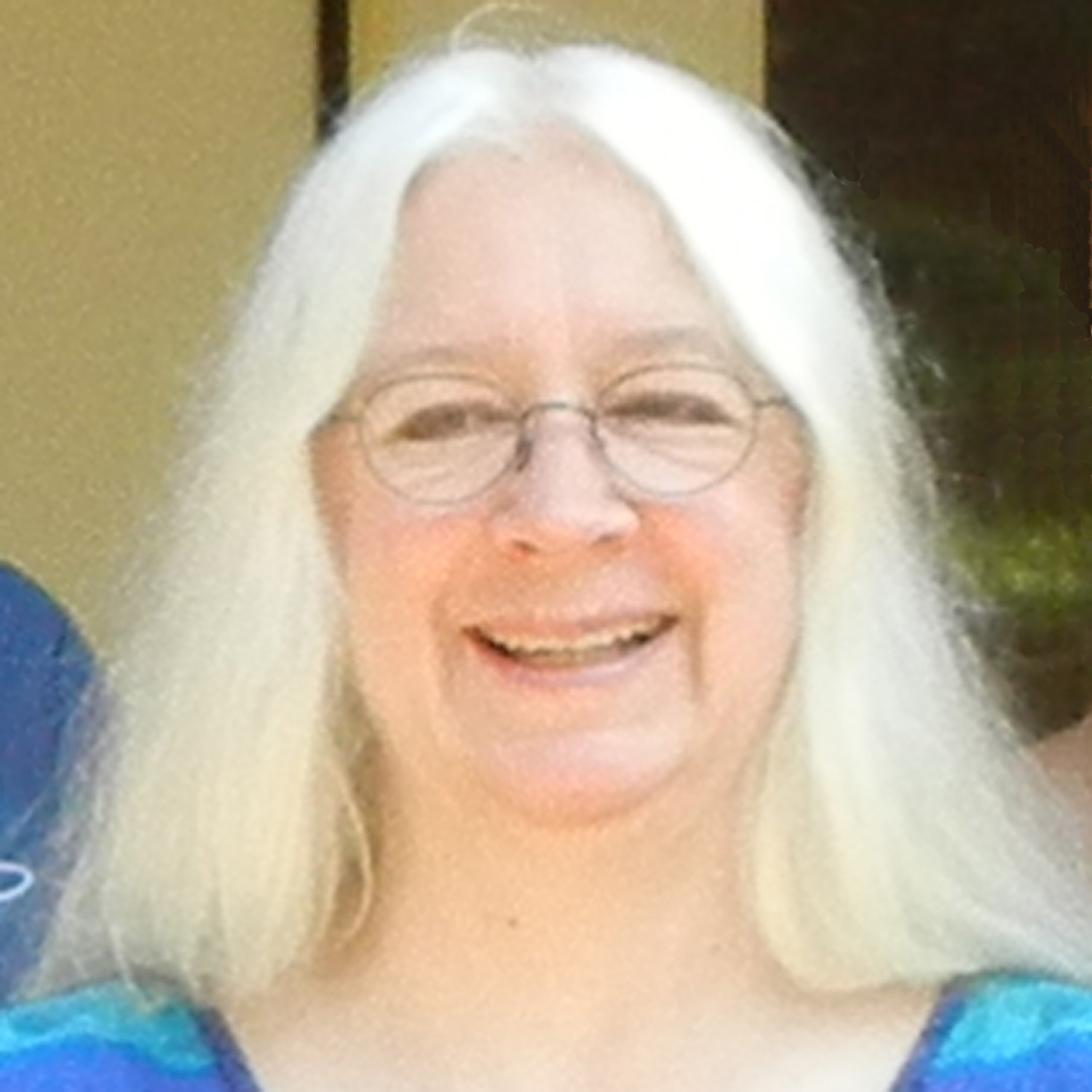
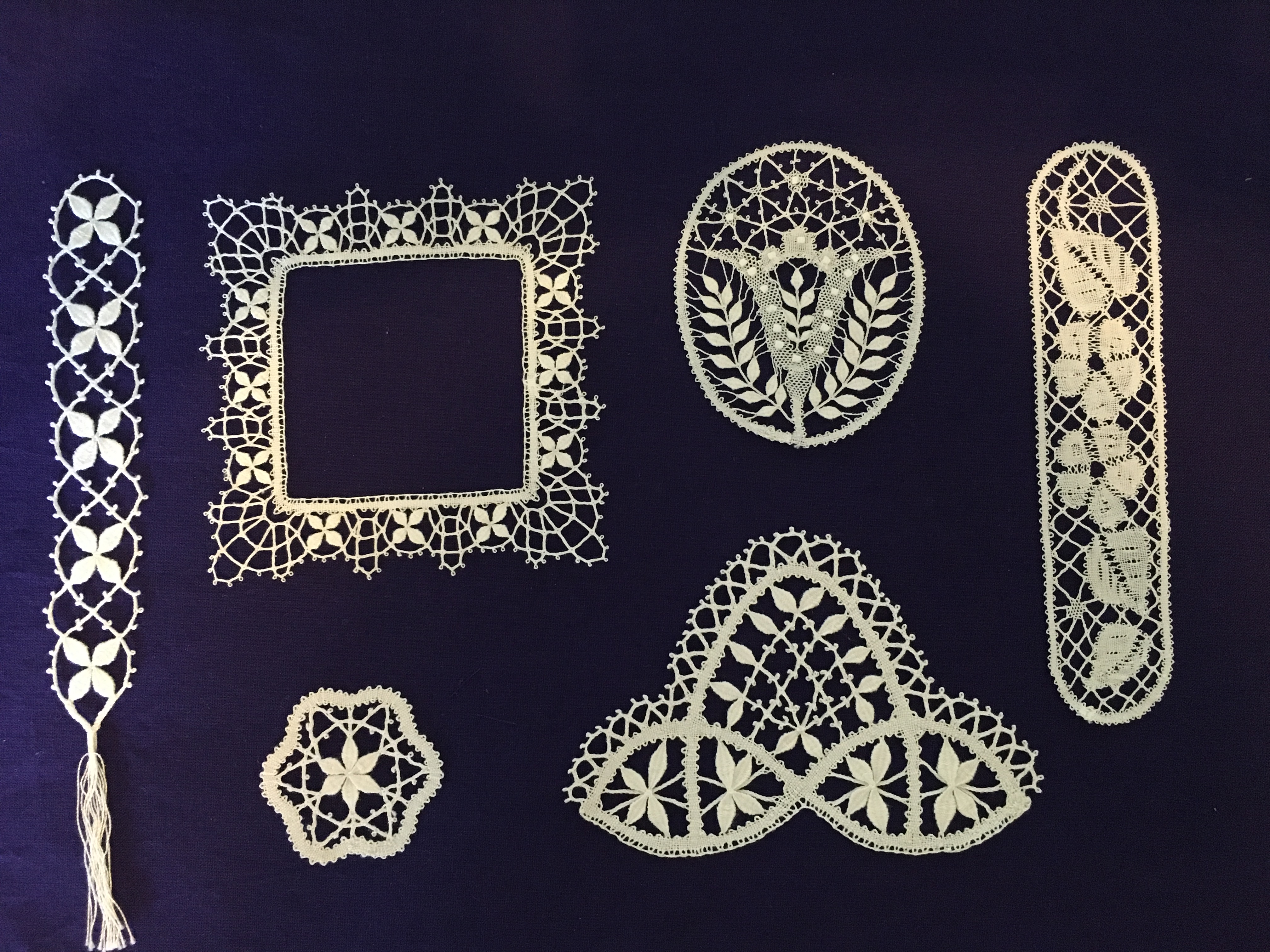
Bruges and Bedfordshire Lace—Beginning and Continuing
This class is designed for those wishing to explore and
perfect either Bruges or Bedfordshire lace. Bruges lace
students will learn the basic tape, plaits and picots, several
types of flowers, leaves, and the scroll. Continuing students
will learn how to navigate the fillings and some additional
Bruges techniques.
Those working on Bedfordshire
lace will have an introduction to this traditional English
lace. You will learn plaits, picots, 9-pin edge, trails,
bouncing plaits/leaves off the trail, crossings, and the basic
Beds leaf. Continuing students will learn adding/discarding
pairs invisibly, the Beds “kiss,” and raised and rolled
tallies.
Students will be able to work at their own
pace with patterns provided or bring patterns to discuss and
explore possible working solutions. Both are fun and
traditional laces to make – come learn some new tricks to add
to your lacemaking skills.
Elizabeth Peterson
Elizabeth started making lace in1985 and teaching in 1996. She
teaches weekly and some of the laces include Torchon, Beds,
Bucks, Bruges, Russian, Flanders and Honiton. She has
expansive experience with numerous laces but has studied
Bedfordshire extensively with Christine Springett for several
years.
Elizabeth has won several awards for her lace
at the local, state, and international levels including the
IOLI contest for Technical Proficiency and Best of Show twice.
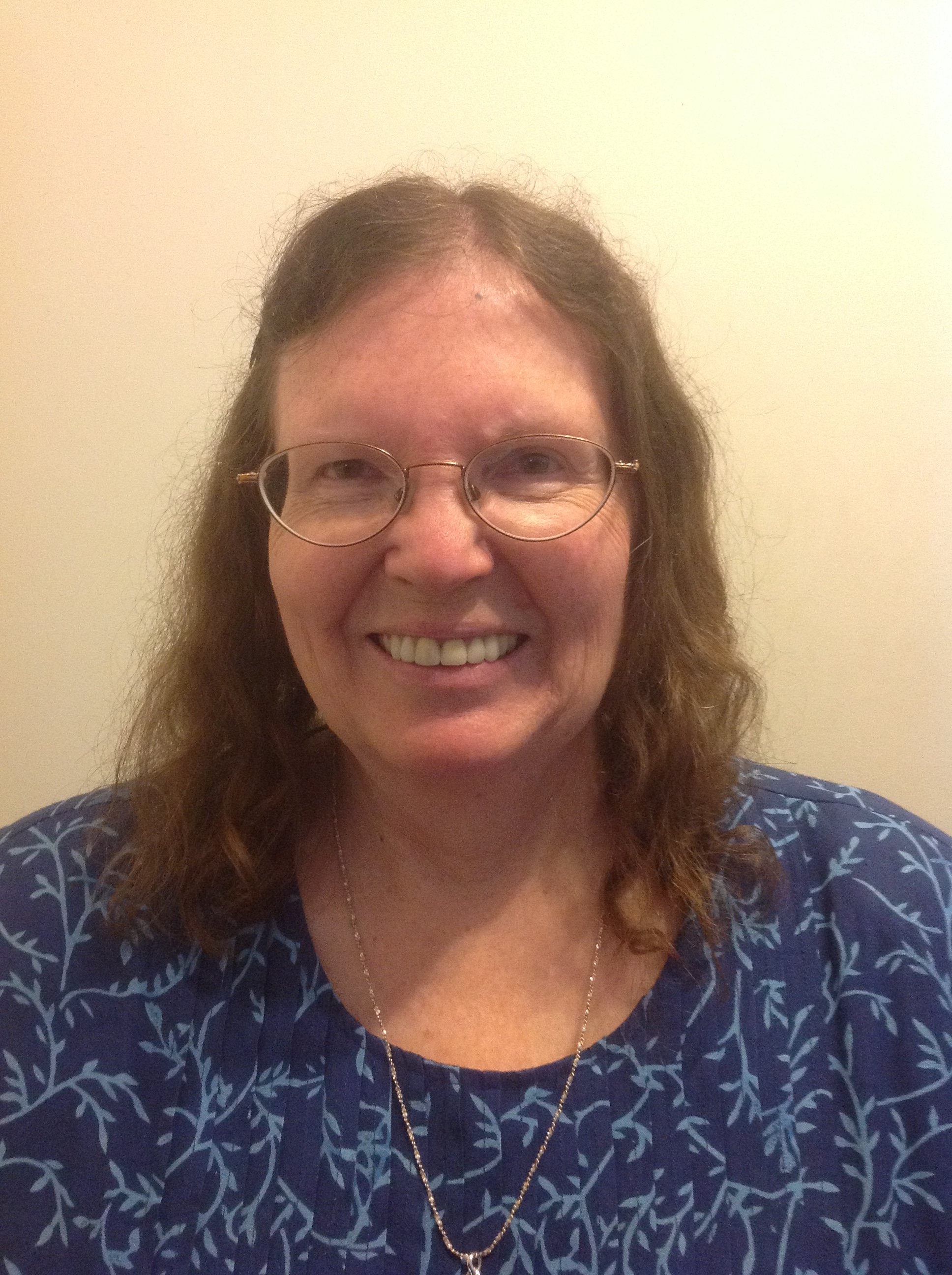
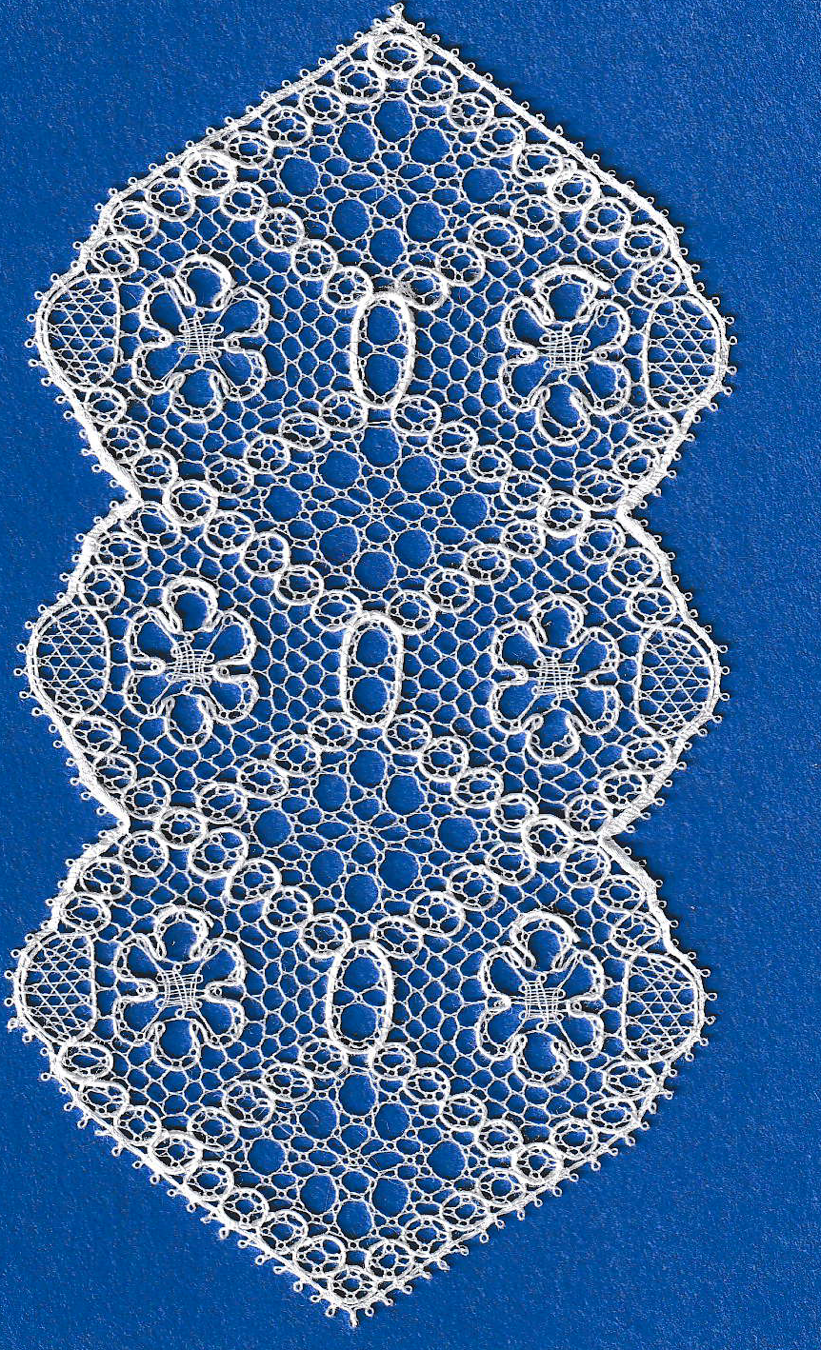
Tønder—Beginning and Continuing
Tønder lace is a fine, point ground lace from Denmark. The
Copenhagen hole and intricate gimp movements are among the many
things that make this lace both fascinating and beautiful.
Pattern choices range from beginner to advanced pieces and will
be chosen by the student and the teacher.
Students
will progress at their own pace, so they can come and enjoy
learning about this beautiful lace. Once the pattern is chosen,
you will receive a pricking to prepare for class. In class you
will get a workbook, including a second copy of the pricking
and working diagrams for the patterns chosen, plus any
additional diagrams that might be helpful. The lace is worked
in 140/2 Egyptian Cotton and 50/2 Fresia Linen.
Bobby Donnelly
Roberta (Bobbi) Donnelly has been making lace since 1990. She
has been teaching for 12 years in various places such as IOLI
Conventions, Winter Lace Conferences, Lace at Sweet Briar, and
a number of smaller workshops across the country.
Bobbi has been involved with four Tønder books: Spiderweb and
Dreams, 2013; A Study of Tønder Lace, 2014; Point Ground and
Picots, 2015; and her newest one, Tallies and Pin Chains,
available after the Tønder Festival in 2019. In class each
year, there are new patterns for returning students to enjoy
plus many other patterns!
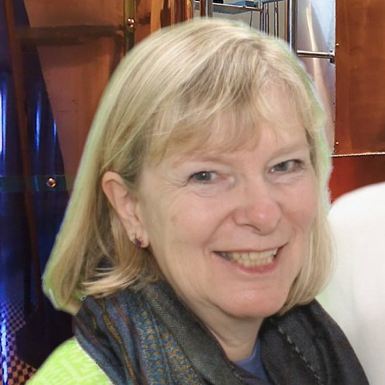
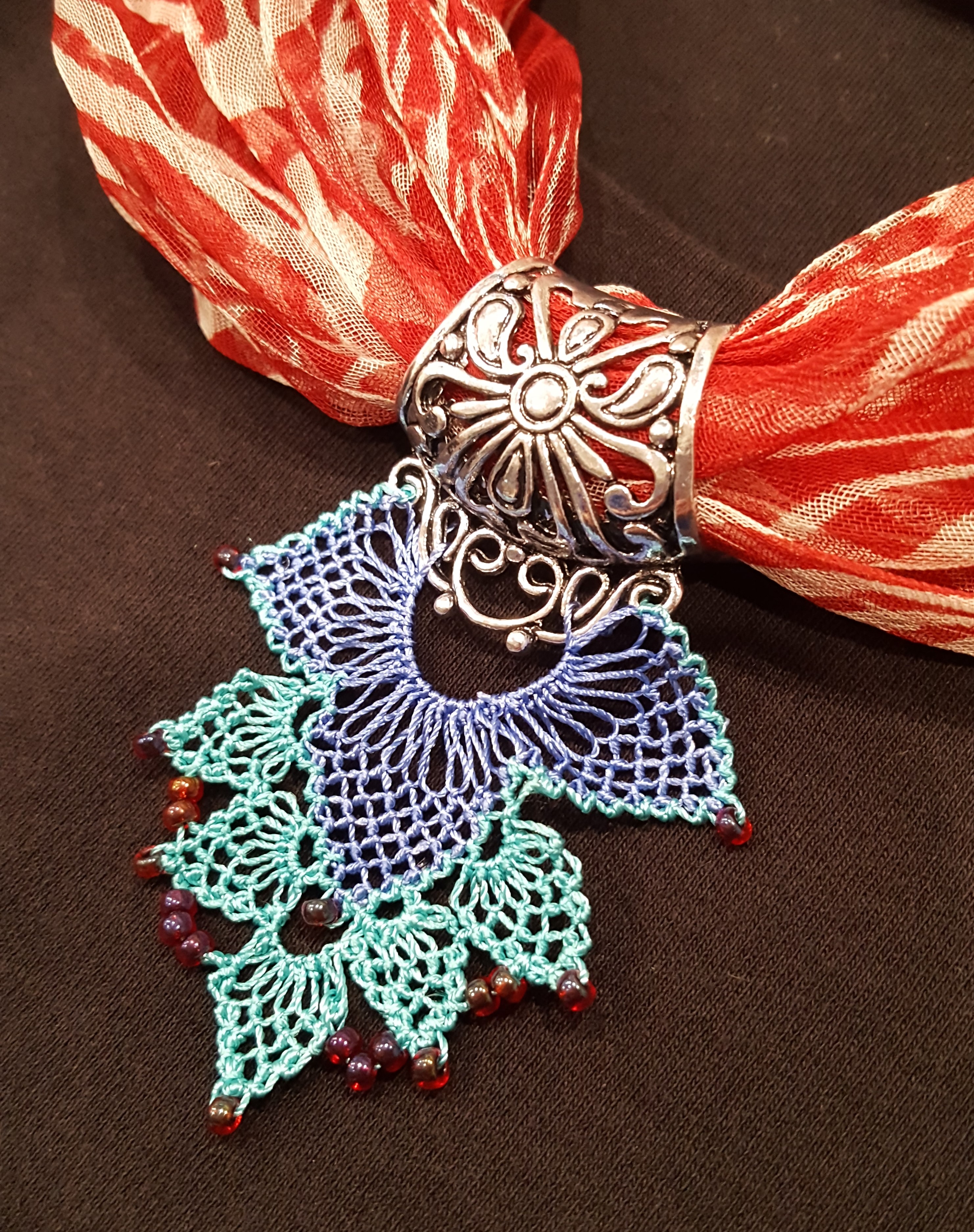
Oya (Knotted Lace) Scarf Necklace—Beginning and Continuing
Oya is a traditional form of scarf edge adornment in Turkey
and other areas of the Eastern Mediterranean, made with
tatting, crochet, or knotted needle lace.
In this
class, you will learn how to make the knotted lace form of
Oya, but instead of a scarf edging you will make a focal piece
for a scarf necklace like those being made by contemporary Oya
artists.
Choose from several different patterns to
make in soft and delicate colors or bold brights!
This method can be used to make a variety of hanging
adornments for scarves, earrings, and necklaces.
Turkish Oya thread and a scarf bail will be supplied, along
with optional beads (there will be a $5 fee for these
specialized materials). (Continuing Aemilia Ars or Frisado
students can work on their projects during this class time;
contact instructor ahead of time for details.)
Carolyn Wetzel
Carolyn has been exploring the range of needle-made lace
techniques for over 25 years. She recently traveled to
Bologna, Italy, to study Aemilia Ars lace history and
technique. She has written lace-related articles for Piecework
Magazine and frequents the online discussion forum
NeedleLaceTalk.ning.com.
Carolyn is a member of the
Finger Lakes Lace Guild, the New England Lace Group, and IOLI
(former Eastern Director). When not studying or making lace,
Carolyn teaches college biology.
